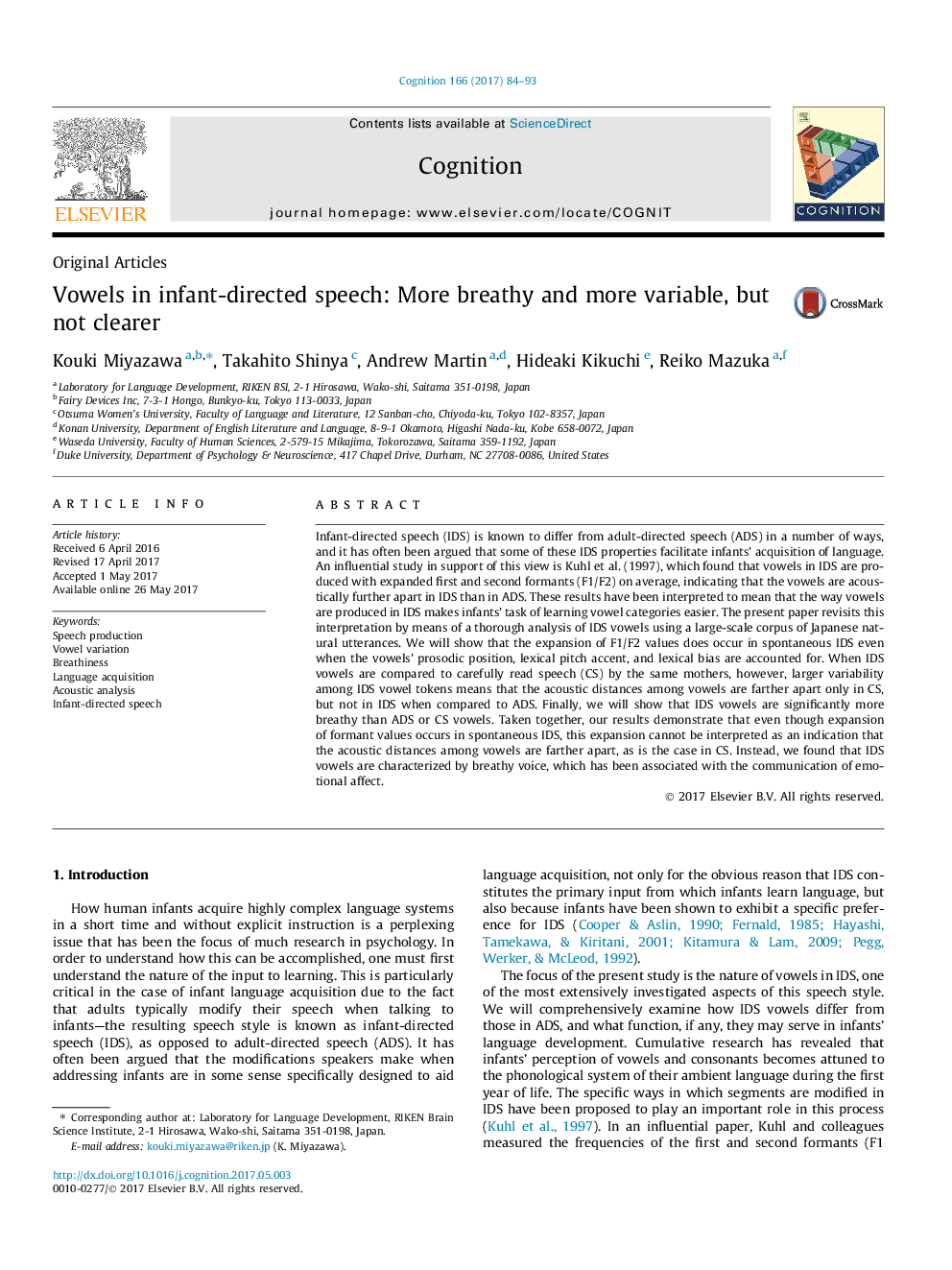| کد مقاله | کد نشریه | سال انتشار | مقاله انگلیسی | نسخه تمام متن |
|---|---|---|---|---|
| 5041544 | 1474101 | 2017 | 10 صفحه PDF | دانلود رایگان |
- Formants of vowels in IDS and CS are expanded compared to ADS in Japanese.
- Due to variability of IDS, the acoustic distance was expanded only in CS, not in IDS.
- The expanded formants in IDS vowels are not an indication of vowel hyperarticulation.
- IDS vowels are breathy, which is known to facilitate communicating affect.
Infant-directed speech (IDS) is known to differ from adult-directed speech (ADS) in a number of ways, and it has often been argued that some of these IDS properties facilitate infants' acquisition of language. An influential study in support of this view is Kuhl et al. (1997), which found that vowels in IDS are produced with expanded first and second formants (F1/F2) on average, indicating that the vowels are acoustically further apart in IDS than in ADS. These results have been interpreted to mean that the way vowels are produced in IDS makes infants' task of learning vowel categories easier. The present paper revisits this interpretation by means of a thorough analysis of IDS vowels using a large-scale corpus of Japanese natural utterances. We will show that the expansion of F1/F2 values does occur in spontaneous IDS even when the vowels' prosodic position, lexical pitch accent, and lexical bias are accounted for. When IDS vowels are compared to carefully read speech (CS) by the same mothers, however, larger variability among IDS vowel tokens means that the acoustic distances among vowels are farther apart only in CS, but not in IDS when compared to ADS. Finally, we will show that IDS vowels are significantly more breathy than ADS or CS vowels. Taken together, our results demonstrate that even though expansion of formant values occurs in spontaneous IDS, this expansion cannot be interpreted as an indication that the acoustic distances among vowels are farther apart, as is the case in CS. Instead, we found that IDS vowels are characterized by breathy voice, which has been associated with the communication of emotional affect.
Journal: Cognition - Volume 166, September 2017, Pages 84-93
